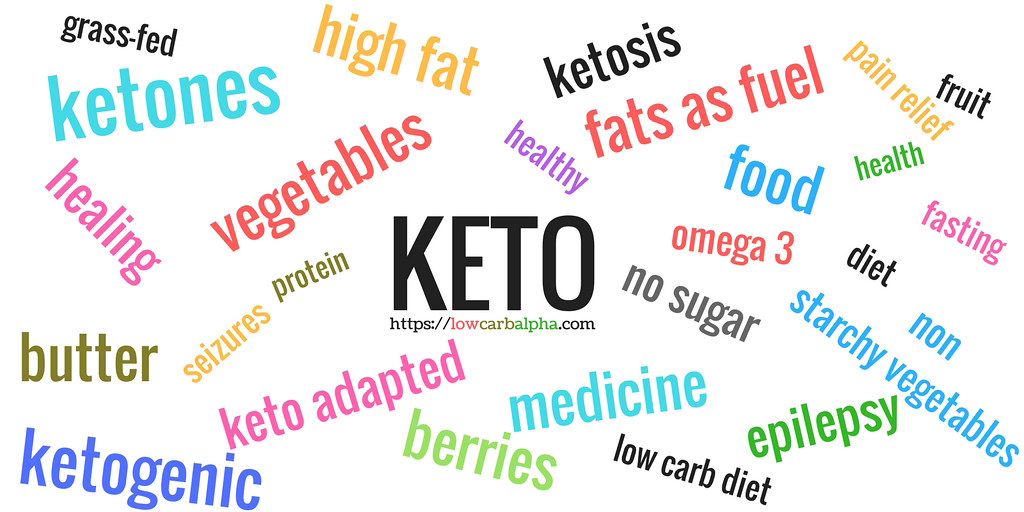Originally published on HVMN by Dr. Brianna Stubbs and Nate Martins. Edited by Barb Kelly
You’ve heard of Keto diets. Hundreds of thousands are eating the low-carbohydrate (low-carb), high-fat diet to improve performance and as well as weight loss. Many wonder if milk or dark chocolate can still be enjoyed while following a keto diet.
Keto comes from the word ketogenic. This is a distinct term meaning that the body is producing ketones from fat.1 When blood ketone levels exceed 0.5mM, the body has achieved ketosis. Ketosis can be achieved in 3 ways:
- Diet (forcing the body to produce ketones)
- Fasting (forcing the body to produce ketones)
- Consuming products that raise blood ketone levels such as HVMN Ketone, ketone salts, or medium-chain triglyceride (MCT) oils.
Most keto-dieters lose weight by raising their ketones through diet alone. Ketones are a fundamentally different energy source than the glucose (carbohydrates) your cells use for energy on a typical carbohydrate-rich diet.
By limiting both carbohydrate (carb) and protein intake, keto diets encourage the body to burn fat and, in the process, produce ketones. Because a ketogenic diet involves severely limiting the intake of carbs, it often gets confused with other low-carb or sugar-free diets. However, just because a diet is low carb or sugar free doesn’t mean it’s ketogenic; subtle differences in the macronutrients consumed on a diet determine if it is keto or not.
A macronutrient is something humans consume in large quantities to provide the bulk of energy for the body. The primary macronutrients are carbs, fats, and proteins. For a diet to be ketogenic, it must be high in fat-intake, low to moderate in protein intake, and very low in carb intake.
Comparison of Low-Carb Diets
Here are some differences of various, well known, low-carb diets:
| Diet | Aim | Macronutrients | Comments |
| Ketogenic | Burn fat through the production of ketones by the liver. | High fat Low/moderate protein Low carbohydrate | The body lives in a state of ketosis. |
| Low-Calorie Ketogenic | Severely restrict calorie-intake to burn fat through the production of ketones by the liver | Consume less than 800 calories per day (what you eat doesn’t matter) | Not sustainable long-term.The body lives in a state of ketosis (and starvation). |
| Low-carbohydrate (Low-Carb) | Moderate to high restriction of carbohydrates to burn fat | Less than 30% of daily calories from carbs | Ketosis may or not occur due to higher intake of protein and/or carbs |
| Atkins | A phased approach to carbohydrate restriction to burn fat. Ketosis may be present but is not an explicit aim. | In phase one, carbs are limited to less than 20 g a day. In the second phase, carbs are reintroduced to “level the body can tolerate” | Less restriction on protein than Ketogenic.Ketosis may occur but it not an aim of the diet. |
| Paleo | Restricted to foods that Palaeolithic Man had available: veggies, fruits, nuts, roots, and meat. | No structural target but does tend to result in higher protein and fat consumption. | Excludes dairy, grains, sugar, legumes, processed oils, alcohol, and coffee |
The critical thing about a ketogenic diet, as the name suggests, is that food intake results in the liver needing to break down triglycerides (fats) for energy, producing ketones. Note that the ketones are not what cause the weight loss; they are a by-product of burning fat. Being in ketosis, then, equates burning fat and losing weight.
In other words, the intake of glucose (in the form of carbohydrates) is severely limited to encourage the liver to breakdown fat to supply energy to the body that is normally supplied by glucose. Note that the keto diet is the only diet that specifically aims to produce ketones and ketosis although others may do so at times.
Ketosis
The critical difference between a keto diet and other low-carb diets is that keto diets promote a state of ketosis and that is how the weight is lost. Essentially, by severely limiting the number of carbs in the diet, the body is forced to breakdown fat to provide energy for our body and brain. Thus, it is important to know when one is in a state of ketosis. Some signs that you are in ketosis are:
- Bad breath
- Weight loss
- Short-term fatigue (this will pass in time)
- Short-term insomnia (this will pass after a few or several weeks)
- Short-term performance loss followed by increased focus & energy
- Suppressed appetite
For several years and continuing today, keto dieting has been and is one of the most popular ways to lose weight because results usually are seen quite quickly and dramatically and, with careful monitoring, keto diets can be maintained for a long time. It is important to note, however, that going on a low-calorie keto diet is not recommended for extended periods and should be followed only for a few weeks to a month at most and should be monitored by a physician or nutrition expert.
Ketosis vs Ketoacidosis – What’s The Difference
The production of ketones when a lack of insulin exists within the bloodstream leads to ketoacidosis (particularly in those with diabetes but rarely in those who are alcoholic, starving, or have an overactive thyroid)[1], which quickly becomes a life-threatening situation.
Diabetics are aware of ketoacidosis because they may have to check for ketones periodically (particularly when ill or experiencing high blood sugars). During ketoacidosis, the ketones in the bloodstream increase to a level that is toxic to the body because the body has no insulin to allow the cells to use the ketones building up in the bloodstream as energy.
Ketosis also exists when an increase in ketones is present in the bloodstream but the significant difference from ketoacidosis is that sufficient insulin is also in the bloodstream to allow the cells to use the ketones as an energy source. Cells must always have an energy source in order to survive. If our cells don’t survive, we don’t survive.
Is It Safe To Follow A Ketogenic Diet
Yes! Even if you are diabetic, a keto diet can be followed, particularly if weight loss is desired. Be sure to consult with your physician prior to undertaking any change in your diet however, because adjustments to medications, blood sugar and ketone testing, or other factors may be needed.
Those with diabetes must be cautious if following a ketogenic diet to ensure they are in ketosis and not ketoacidosis. The key to maintaining that difference is testing often to ensure that your blood sugars are not high (which indicates a lack of insulin in the bloodstream).
Different studies have shown that a keto-diet can increase insulin sensitivity[2], reduce excess weight[3], and lower HbA1c results[4] in Type 2 diabetes.
What about Chocolate on a Keto-Diet?
Milk chocolate is a tricky one for those following a keto diet because the milk in it increases the carbohydrates in each serving. Dark chocolate, when unsweetened or sweetened without sugar (sugar-free) is lower in carbs and can be included in keto-diets. Sugar accounts for a high portion of the carbs in regular dark chocolate. So much so that it is impossible to include sugar-sweetened dark chocolate even occasionally in a keto diet.
Ross Sugar-Free (No Sugar Added) Dark Chocolate has only 7 grams net carbs per 34-gram (1.2 oz) bar, making it a smart treat to have when a hankering for chocolate – or something sweet — is threatening to pull you off a keto-diet. You can also check out a range of our top-rated keto chocolate options, perfect for any cravings you may have!
[1] Fallabel, C. (October 10, 2021). Ketosis vs. Ketoacidosis. The Difference Explained, Diabetes Strong. https://diabetesstrong.com/ketosis-vs-ketoacidosis/
[2] Athinarayanan, S., Adams, R., et al. (2019). Long-Term Effects of a Novel Continuous Remote Care Intervention Including Nutritional Ketosis for the Management of Type 2 Diabetes: A 2-Year Non-radomized Clinical Trial. National Library of Medicine. https://www.ncbi.nlm.nih.gov/pmc/articles/PMC6561315/
[3] Bodin, G., Sargrad, K., et al. (March 15, 2005). Effect of a low-carbohydrate diet on appetite, blood glucose levels, and insuin resistance in obese patients with type 2 diabetes. National Library of Medicine. https://pubmed.ncbi.nlm.nih.gov/15767618/
[4] Walton, C., Perry, K., et al. (August 14, 2019). Improvement in Glycemic and Lipid Profiles in Type 2 Diabetics with a 90-Day Ketogenic Diet. National Library of Medicine. https://pubmed.ncbi.nlm.nih.gov/31485454/






0 Comments